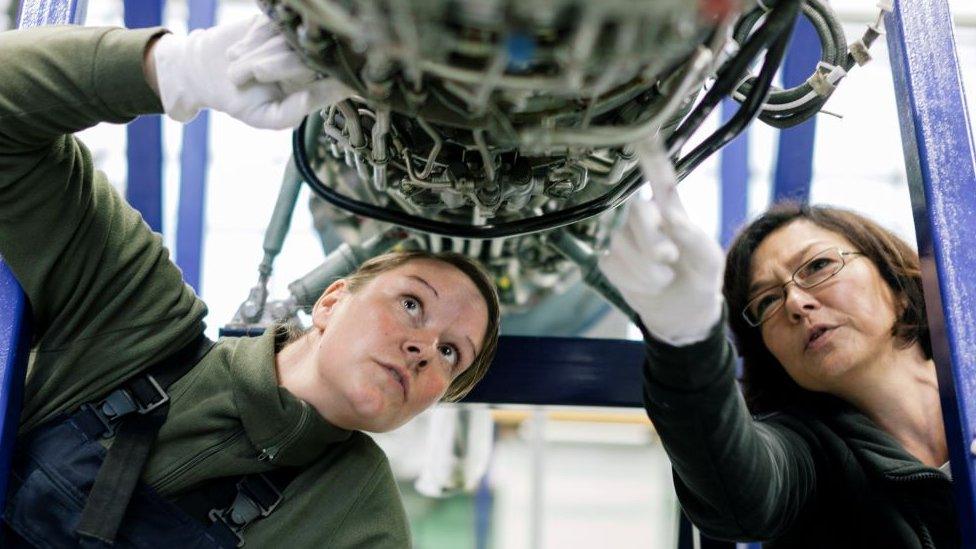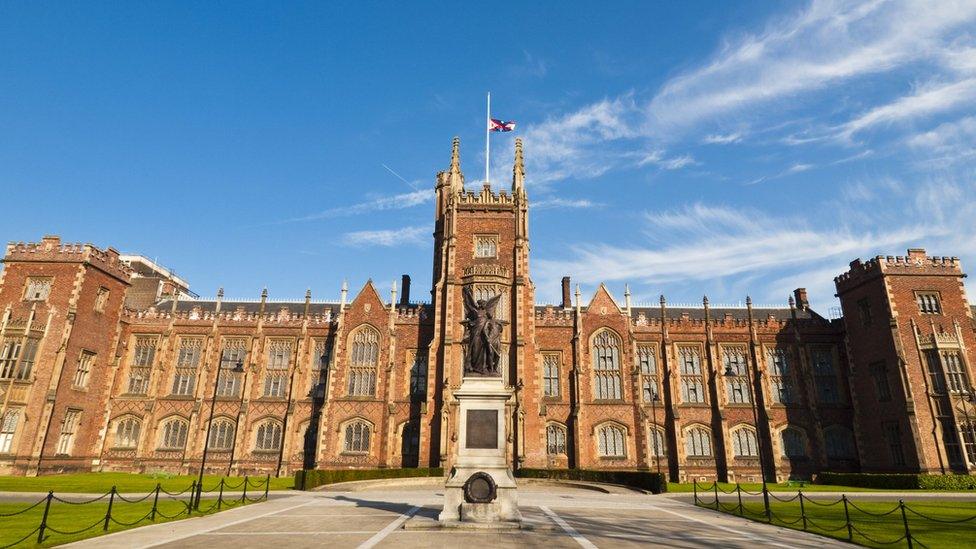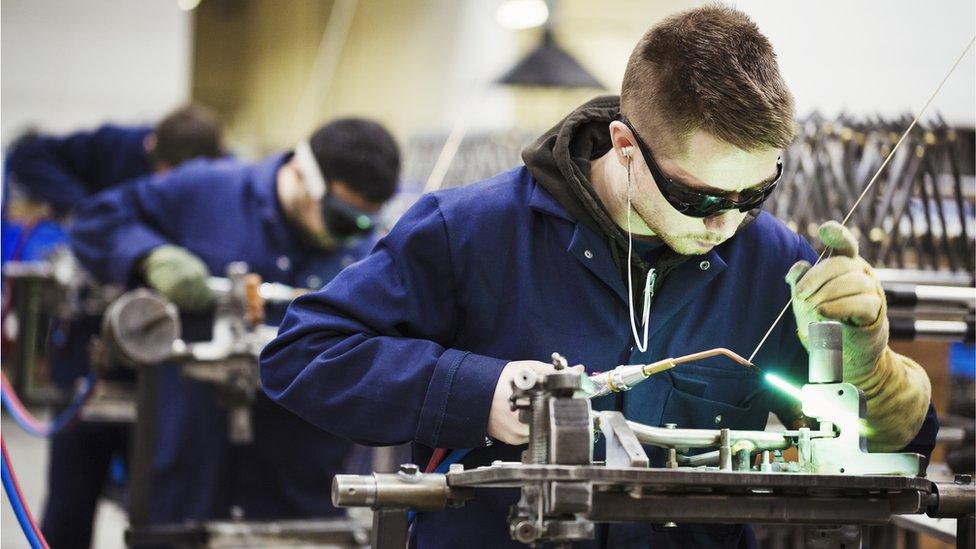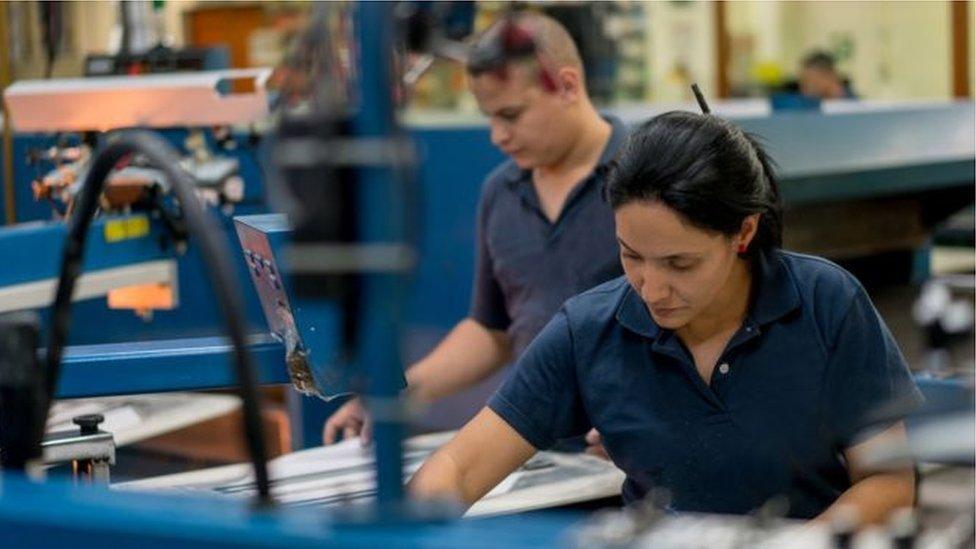NI productivity increase only temporary, analysis suggests
- Published

Productivity measures the amount of economic output generated by each worker
Northern Ireland's economic productivity improved rapidly between 2020 and 2021 but this is only likely to be temporary.
Experts at Queen's University Belfast suggest one-off impacts from the pandemic account for the change.
Productivity measures the amount of economic output generated by each worker.
In the long term, rising living standards are dependent on rising productivity.
Northern Ireland has consistently had the lowest performance of any UK region and is also far behind the Republic of Ireland.
However the big improvement between 2020 and 2021 saw Northern Ireland moving up to seventh place from previously being last of the UK's 12 regions.
This was due to the highest productivity growth of any UK region, at 6.7% in real terms.
This meant Northern Ireland's gap to the UK average closed significantly, shrinking by five percentage points. This gap has previously remained relatively stable, at between 15% and 20%.
However, analysis by Queen's academics John Turner, David Jordan and Ruth Donaldson suggests this is not due to a dramatic improvement in underlying productivity drivers.

The analysis points to the impacts of the pandemic, particularly furlough, as drivers for productivity
Instead they point to the statistical impacts of the pandemic, particularly the furlough scheme which saw a big reduction in the number of hours being worked across the economy.
They say: "Between 2019 and 2021, NI saw the largest decrease in the number of hours worked of any region, falling by 10%.
"It also saw the smallest decrease in the total real value of economic output (GVA), falling by only 1%. Together, these had a large positive effect on NI's productivity growth."
In other words because the number of hours worked fell much more than the amount of economic output, economic output per hour automatically increased.
Therefore as hours worked returned to normal after the furlough output per hour is likely to have fallen back.
Long-tern improvements
The academics add that some issues which are fundamental have also shown some improvement.
They wrote: "Long-term improvements continue to be seen in levels of tertiary education and those with no skills.
"There has also been a welcome short-term reduction in economic inactivity, although this still remains the highest rate of any UK region."
Related topics
- Published28 November 2022

- Published18 November 2021

- Published9 November 2022
